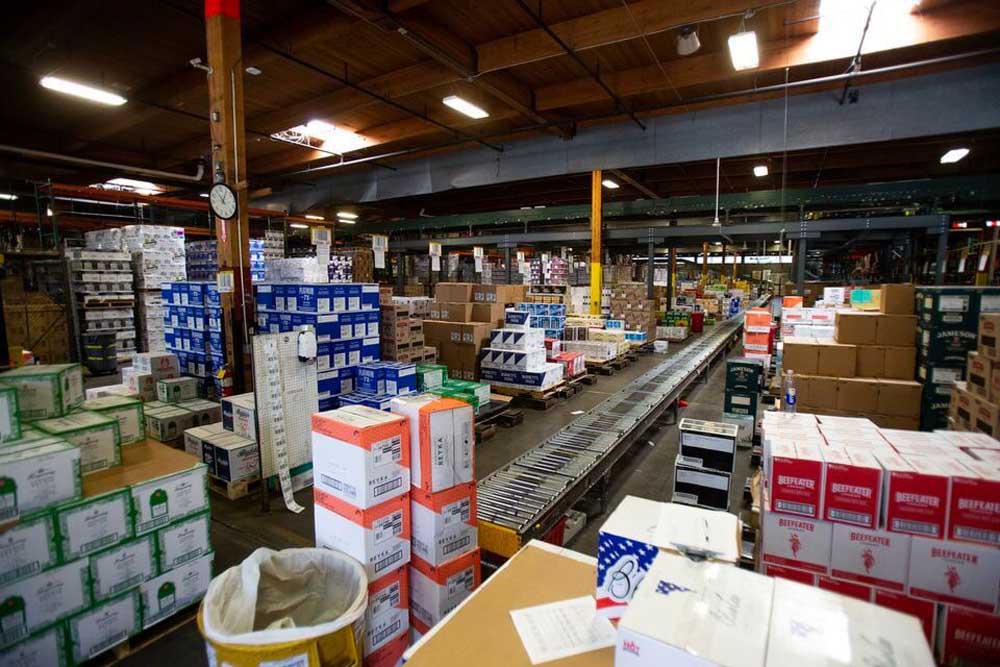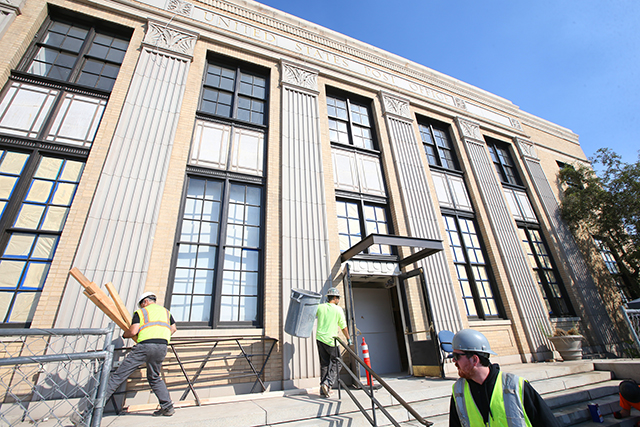Oregon officials overestimated growth in liquor sales
Published 11:22 am Wednesday, February 7, 2024

- Cases of liquor are stored in the Oregon Liquor and Cannabis Commission warehouse in May 2023.
The Oregon Liquor and Cannabis Commission appears to have vastly overestimated the growth of liquor sales in the current two-year budget cycle and beyond.
The agency told lawmakers Tuesday that demand for booze — and the lucrative stream of revenues it generates — is essentially flat.
Trending
That calls into question earlier projections of robust sales growth of 20% every two years. Those projections were part of the agency’s sales pitch to lawmakers for a new warehouse and headquarters facility in Canby, the costs of which are also escalating.
The new estimates came in an agency update on the progress of the warehouse project to members of the Joint Ways and Means Subcommittee on Transportation and Economic Development. The agency is asking lawmakers to shift $9 million in authorized borrowing that was approved in 2022 for the warehouse structure and office space to cover a 60% increase in the estimated cost of a conveyor system that will help manage inventory there.
Though it wasn’t discussed in detail at Tuesday’s informational hearing, the financials presented showed that the estimated cost of the warehouse and conveyor system, already controversial, had effectively risen by another 15%. While the overall $145 million budget has remained flat since funding was approved in 2022, it no longer includes 35,000 feet of office space, at a cost of $19 million, that was originally included to house the agency’s headquarters staff.
The agency backed away from plans to co-locate its headquarters in Canby last summer, as originally reported by Willamette Week. It now plans to lease 16,000 square feet for the headquarters at a state office building in the Lloyd District. The office complex in Canby was deemed too expensive, and 50% or more of its professional staff now work remotely during the week, said Craig Prins, the agency’s executive director.
Prins said the location in Portland would eliminate a commute to Salem for many of the agency’s employees and contribute to the governor’s initiative to revitalize Portland. The agency’s existing headquarters straddles the border of Portland and Milwaukie.
Prins on Tuesday characterized the changes as “value-engineering” and an effort to focus the original spending authorization on building the warehouse while staying within the original budget. But the cost to lease the office space would add $390,000 to the agency’s annual operating costs, with no reduction projected in the cost to build the Canby facility.
Trending
In an email, Mark Pettinger, an agency spokesperson, attributed the increased costs to upgrades in the design of the conveyor system to make it more efficient and inflationary pressures on steel and labor, as well as more accurate information with the benefit of being two years into the project.
“Projects of this magnitude often go through iterative changes from original scoping to final design,” Pettinger said.
Liquor sales are the third largest source of revenue for the state general fund, and the second largest source of revenue for cities and counties. The agency had previously estimated that those sales would continue to grow at a 20% clip every two years for the foreseeable future. But it now says liquor sales have plateaued over the last 30 months.
It’s not clear how the agency’s previous leaders came up with those estimates, and the officials involved have since left the agency as part of the fallout from a scandal over the diversion of high-end liquors from the state’s inventory for their personal use. Liquor sales growth over the previous decade had averaged closer to 5% a year, or just over 10% per biennia, apart from one blip during the pandemic when the agency saw sales growth closer to 18% over the two-year budget cycle.
Bottom line, the actual results could leave cities and counties looking to plug budget holes, as the agency’s revenue distributions are projected to be flat during the current budget cycle rather than the 20% increase they were anticipating.
The agency had previously forecast total revenue distributions from alcohol sales, including liquor, beer and wine taxes, of $706 million during the current two-year budget cycle. It now estimates those distributions will be $132 million less, a 19% decline.
Under the latest forecast, about $327 million would flow to the state, $174 million to cities, $51 million to counties and $20 million for mental health programs. Mental health programs are not expected to take a hit.
The new estimates represent a 9.5% decline from actual distributions in the previous two-year budget cycle, when sales spiked during the pandemic.
Kailean Kneeland, the agency’s chief financial officer, told lawmakers that case sales of liquor in Oregon have plateaued, mirroring a national trend, and the trend of consumers trading up to higher-end and more expensive spirits has waned. The move “down shelf” to more mid-level options is eliminating any natural increase in sales that would occur due to inflationary price hikes, according to agency answers to follow-up questions.
“It’s something we’ve been monitoring very closely,” Kneeland said at the hearing, adding that the agency is hoping to update its revenue model to more accurately estimate sales. “That projected 20% growth is just not materializing.”
Plateauing of liquor sales doesn’t negate the need for a new warehouse, conveyor system and information technology modernization. The agency is currently operating its wholesale distribution system out of a 60-year-old facility comprising two warehouses that are antiquated and operating at or above capacity, Prins said Tuesday.
In 2019, the agency estimated that the new headquarters facility and warehouse would cost $62.5 million. But in April of 2021, the agency agreed to pay $40.7 million for a 34-acre parcel of land that was subsequently appraised for $22 million and had been assembled by a commercial real estate firm for a fraction of that price not long before.
The estimated cost for the project now totals $145.5 million, which Pettinger said includes the price of the land. But that estimate no longer includes the agency’s headquarters, and lease costs for that space will add up over time.
Officials also told lawmakers Tuesday that the new facility would likely open in January 2026, about six months later than previous estimates.








